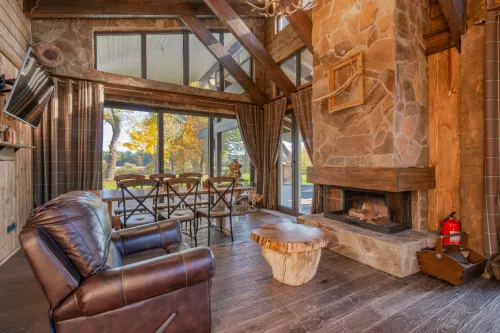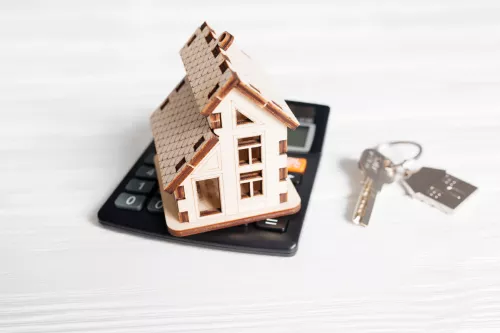Neighbor Easement Problems
While easements should not necessarily cause problems, sometimes disagreements arise. What do you do in the event that the other party requests an easement you don’t agree with, or vice versa? In this article, we will describe common neighbor easement problems and discuss questions related to the topic.
Briefing questions:
- "What is the easement law?"
- "What are easements rights of ingress?"
- "What is the difference between an ingress egress and an easement?"
- "Can I put a fence around an easement?"
A Common Reason
One common reason for easement problems is simply when a property owner is unaware of an easement on his property. When easements are unexpected, it is legitimate to have questions and to want explanations. For this reason it is highly recommended that, before purchasing a property, you inquire into easements on the property. Knowing these can prevent unpleasant surprises.
Imagine if you purchased a property and later decided that you wanted to build a pool in the backyard. But, unbeknownst to you, under the ground are pipes that belong to a public utility that has an easement on your backyard. Now, you are legally prohibited from building in your backyard. However, had you inquired into easements before making the purchase, there would be no such surprises.
Another way of avoiding disagreements between neighbors is understanding the easement rights of ingress and egress. If there is a landlocked property, for example, it is possible that they will need to access your property to access a main road, entering and exiting.
Simply being aware of this necessity avoids problems. In the event of disagreements or abuses of rights, then the matter should first sought to be settled amicably, and, in the last case, legally.
What is the easement law?

An easement is a type of property right that allows another person or entity permission to use the property of the landowner for a specific, limited purpose.
That answered, let’s discuss easements rights ingress and egress and the difference between them.
What are ingress and egress rights when referring to real estate?
In real estate, ingress is the right of entering a property through a property that is not your own, while egress is the right of leaving a property through a property that is not your own.
Ingress and egress rights are an important knowledge to homebuyers since they give others the rights of accessing your property or give you the right of accessing somebody else's property, when necessary for entering or exiting your own property.
What are easements rights of ingress?
The easement right of ingress is the legal right to enter a property, even if you are not the owner, almost always for the purpose of accessing your own property. Usually the right of ingress is granted with the right of egress.
Without the right of ingress and egress, the owner of a landlocked property, for example, would basically be trespassing every time they entered or left their property.
What is the difference between an ingress egress and an easement?
Easement is the most broad category of the three, as easement includes ingress and egress, as well as other rights that one might have upon another’s property for a given reason.
Can I put a fence around an easement?

Yes, you can! Fences are regularly built around, along or across easements. Before doing so check the easement terms and local regulations. It is always recommended that you speak with the other party to inform them of any changes you plan on making. Most important is that you reach an agreement that is acceptable by both parties.
While it is possible to create fences on easements, and there are rarely issues with doing so, fences or other structures on easements are susceptible to unexpected changes. If, for example, a fence is built upon an easement of a public utility service, it would be possible that the fence would need to be taken down in order for the owner of the easement, the utility service, to do its job.
For these reasons, it’s wise to consider the pros and cons of building a fence around an easement.
People Also Ask
Tips on how to avoid easement problems with your neighbor
Open and respectful communication is the pillar to avoiding easement problems with your neighbors. It is very common for neighbors to dispute over an easement, but keep in mind that the term “dispute” doesn’t mean aggression or conflict, but an issue to be legally resolved. Rarely are so-called disputes aggressive. They are often merely an establishment of terms in contract, agreed to by both parties, regarding the usage of a particular stretch of land.
Here we listed some alternatives ways to avoid conflict with your neighbor:
Keep in mind access rights
In the case that your neighbor has ingress and egress rights, respect those rights. Don’t do anything that would make their passage more difficult, and be mindful of their schedule and needs.
Consult experts
Consult with legal experts when in doubt to ensure that you and/or the other party are complying with the easement terms.
Keep records
Maintain a registry of all communications and agreements related to the easement. This documentation can be useful in case of disputes.
Maintenance
Ensure the maintenance of the easement area. Make sure that structures or utilities within the easement are regularly inspected and repaired, as agreed upon in the easement agreement.
Mediation
In the case of disputes, it is recommended that any options resulting in legal battles be avoided. Reconciling personally will save you trouble and money in the end. A neutral third party can often help find mutually acceptable solutions.
How to settle easement disputes
Settling easement disputes can be challenging, but it's not impossible to reach a resolution that benefits all parties involved.
Here are some tips on settling easement disputes amicably:
Explore alternative solutions
Be open to alternative solutions that may address the underlying concerns of both parties. If the dispute is about the location of an easement, for example, considering a relocation or adjustment if possible.
Consider Buyouts
In some cases, it might make sense for one party to buy out the other's interest in the easement. This can be a solution of mutual benefit, but it will require agreement on the terms and valuation of the easement.
Document agreements
Upon reaching a resolution with your neighbor, be sure to get the agreement in writing. This documentation should outline the specifics of the agreement as well as any changes to the easement terms.
Litigation
If an agreement cannot be reached through negotiation or mediation, you may have to litigate. Do everything you can to avoid this, as it can be costly and time-consuming.
Adhere to court orders
Whatever the court determines, both parties must adhere to. It is as simple as that.

 Marcio Vasconcelos
Marcio Vasconcelos





